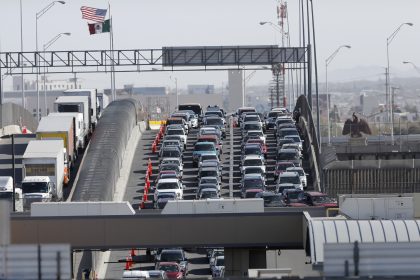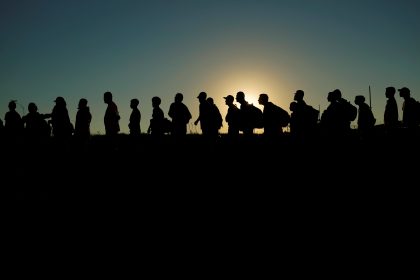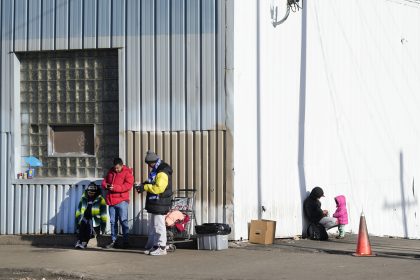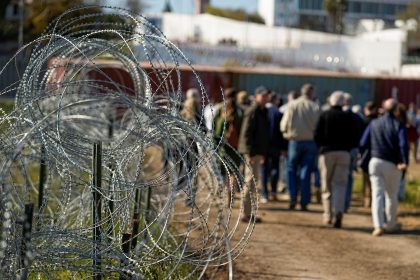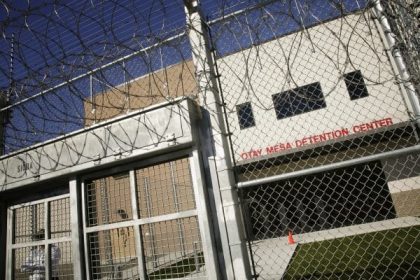Green Card Gridlock: When Will Congress Agree on a Solution?
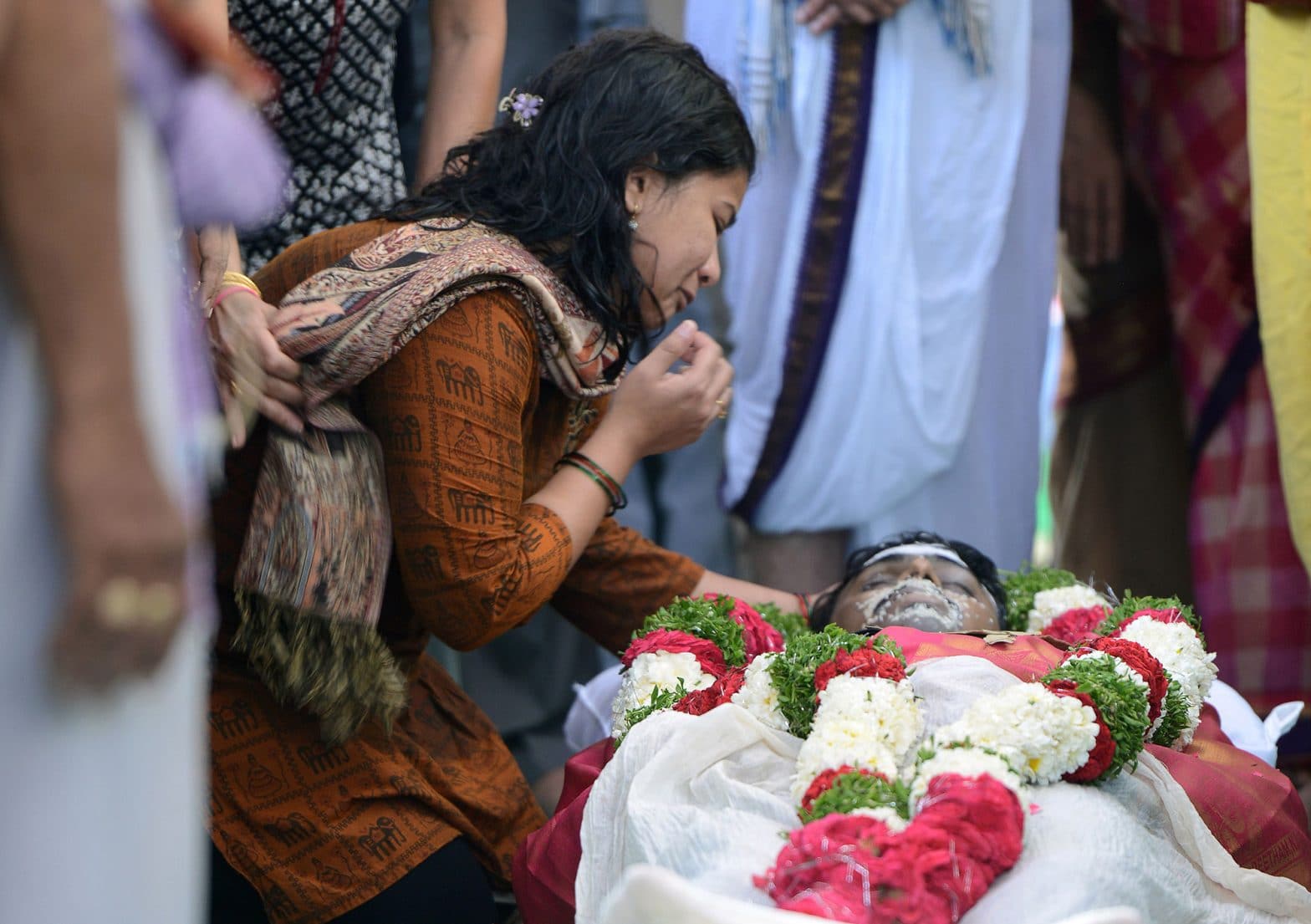
WASHINGTON — On Dec. 18, immigration reform stalwart Richard J. Durbin’s announcement on the Senate floor about a rare bipartisan breakthrough flew largely under the radar, overshadowed in the chaotic flurry of impeachment.
Durbin, an Illinois Democrat, and Republican Sen. Mike Lee of Utah had dueled two months earlier over unanimous consent requests on the Senate floor, and had since been deadlocked.
Each had pushed for his own solution to an important but often overlooked symptom of the broken U.S. immigration system: the employment-based green card backlog. Because of it, hundreds of thousands of people — overwhelmingly from India — wait in limbo, sometimes for decades.
A version of Lee’s legislation — the Fairness for High-Skilled Immigrants Act — had quietly passed the House earlier in the year with bipartisan support.
When Lee tried to bring the legislation to the Senate floor for an immediate vote, Sens. Charles E. Grassley and Rand Paul objected.
Then, in October, Durbin objected.
Durbin had introduced his own legislation that he felt tackled the problem more holistically. But when he later sought unanimous consent for his measure, it was Lee’s turn to block it.
Paul also had a legislative fix on the table.
Then came the December compromise between Lee and Durbin, who had become the two opposing poles of the backlog issue.
“We’ve come up with a proposal that moves us in the right direction,” Durbin said of his agreement with Lee. “These families affected by this backlog are really going through hardship and concerns that no family should face. The sooner we resolve them, the better.”
Outside Congress, in online forums, debate over how to fix the problem grew tense and, at times, heated. Immigrant advocacy groups, lawyers and policy experts specifically zeroed in on the logjam of employment-based green cards — and often found themselves in the unusual position of opposing each other.
Meanwhile, on Capitol Hill, the compromise from Lee and Durbin remains in a holding pattern while the two lawmakers determine whether they have succeeded at clearing the path of further objections.
———
Every year, the United States distributes about 1 million green cards based on various categories — to immediate relatives of citizens, refugees and asylum-seekers, and to foreign workers on temporary visas. Since 1965, there’s been a limit to how many spots can be given to applicants from any one country.
Family reunification has always been the main priority of the U.S. immigration system, so the bulk of green cards go to people sponsored by family members already in the country. A small share of total green cards — around 140,000 — are reserved for the employment category, per a 1990 immigration law. No one country can be allotted more than 7% of the total work visas, which feed into the employment-based green card pipeline (although visas left over in one category can roll over to another). Despite changes in the economy and labor market, this upper limit of 7% has remained the same since 1990.
The problem is that the number of green card petitions approved tends to far exceed that 7% limit. So petitioners from a country over that threshold are put on a wait list. Upwards of 500,000 people who applied for key employment-based categories of green cards in 2018 are in the current backlog, according to an estimate by the libertarian Cato Institute.
But that backlog isn’t distributed equally.
Work visas like the H1-B are intended for temporary workers in science and technology fields. But these visas have become a key steppingstone to citizenship for immigrants with the resources to study at American colleges or who’ve been recruited by U.S. employers in science and technology-related fields.
Indians have increasingly come to the United States since the 1960s, but they arrived at an accelerated pace following the tech boom that started in the mid-1990s. They now make up the bulk of green card applicants in the employment-based category, followed by Chinese. Because they quickly come up against the 7% annual limit, most Indians will probably wait 10 or more years to obtain their green cards, according to Cato. The ones who applied in 2018-19, however, may face a line up to 50 years long.
Many of these individuals develop deep ties to America while waiting. They bring over spouses and buy homes and cars. They enroll children in school. And yet, true stability is precariously at arm’s length.
Their American lives run on three-year extensions of their work visas, because even if their green card petitions are approved, it may be decades before the actual green cards are granted. The wait has immense costs — lawyers’ and application fees, but also lost wages, promotions and other opportunities, in addition to the vulnerability to wage exploitation. More intangibly, it comes with grave uncertainty about the future.
If a visa holder in the green card backlog dies during the wait, the person’s spouse and family lose their place in line — and can find themselves without legal status. That’s what happened to Sunayana Dumala, the wife of Srinivas Kuchibhotla, a young engineer killed in a 2017 hate crime. In a recent Kansas City Star op-ed advocating for Lee’s legislation, Dumala explained what it felt like to be stuck.
“We cannot travel back to our home countries for funerals, let alone weddings or to support our parents’ medical needs, because we fear being stuck abroad and uprooting our lives,” she wrote. “Children born overseas who accompanied their parents to the U.S. are ‘aging out’ of green card applications and may need to leave the country. Self-deportation is the only alternative to living this life of constant fear. But is that really a choice?”
———
While many on both sides of the aisle agree about the severity of this group’s predicament, they diverge on the solutions.
Lee’s original bill sought to phase out country quotas for employment-based greencards, creating a first-come, first-served system. It also proposed raising country quotas for family-based green card categories from 7 to 15 percent. But, because many Republicans generally oppose increased immigration, the bill would not increase the total green cards given annually.
“At first glance, you say, ‘Oh this is awesome — it gets rid of per-country limits,’ “ immigration lawyer Charles Kuck recently recalled on his podcast. “But because of the way it gets rid of per country limits, it has a serious effect on people already going through the immigration process, and it comes at a particularly inopportune time.”
Any proposal to bring more immigrants to the country is a nonstarter for hard-line immigration restrictionists. But disagreement about the impact of Lee’s bill has split even immigration proponents into two camps. Advocates of the bill believe it rectifies a past wrong, giving Indians their rightful place in line, while critics emphasize that it does so by shifting the burden of the backlog onto other countries and visa categories, instead of eliminating it.
Ira Kurzban, a prominent immigration lawyer and professor at University of Miami, pointed out that the country caps were instituted in 1965 to have a more equitable immigration system. The immigration law passed that year also removed bars on immigrants from Africa, the Middle East and Asia. While the caps had an unintended effect in creating the backlog, they actually opened up immigration to Indians in the first place, Kurzban argued.
In an analysis he circulated, Kurzban demonstrated that while India disproportionately bears the burden of the backlog, its nationals actually get more than their 7% share every year because of an oft overlooked loophole: While each country is allotted 7 percent, unused shares from low-demand countries like Iceland can be given out to high-demand countries, including India.
Kurzban further estimated that Lee’s original bill would actually increase the total backlog for employment-based residency to 1.1 million by 2029 — and increase wait times to 17 years, for everyone.
“Do the math,” he wrote in an August blog post.
He and other critics also worry that in a first-come, first-served system, since backlogged Indians would get all the green cards over the next few years, they would edge out applicants from other countries. When Paul objected last summer, he asked for a carve-out for health care workers — nurses from, for example, the Philippines — who would be one of the groups facing long waits due to Lee’s original bill. Other critics brought up the potential disadvantage his bill could further cause for Middle Eastern scientists affected by the travel ban and longtime immigrants from, say, Latin America at risk of losing temporary protections that let them stay and work in the United States.
“The answer is not to fight over the few visas given each year; the answer is to have a larger number of visas to the benefit of the U.S. economy,” Kurzban wrote in his blog post. “Simply, we need more visas.”
———
Other experts aren’t so sure about the forecasts of deleterious effects and believe that Lee’s bill is the best chance in the current political reality to address the problem. David Bier, Cato’s immigration policy analyst, estimates about 50% of the applicants in 2018 were Indian but received only 13% of the total green cards issued. He calculated that Lee’s legislation, if implemented, would resolve the backlog in eight years — during which time only Indians would get green cards for around four years.
“Opponents of the legislation claim that this is unfair, yet new Indian applicants who applied in 2018-19 will not receive any greencards under the bill for almost eight years, and if the law isn’t passed, then they would face a half a century wait (ultimately, nearly half would give up before then),” he wrote in a blog post.
———
Aman Kapoor is the co-founder of Immigration Voice, a group of Indians lobbying for a solution to the green card backlog. He has lived in the United States for 17 years. He and his family received approval for their residency application in 2007, but they still don’t have green cards.
Even before Durbin formally put a hold on Lee’s legislation in mid-October, Kapoor and his group launched a media blitzkrieg accusing the Illinois senator of discriminating against Indians by not allowing Lee’s bill to be taken up. They argued any amendments he intended to tack on would amount to a “poison pill” that would alienate Republicans and ultimately kill the bill.
“Senator Durbin’s argument against the bill is no different from the arguments presented by those against removing segregation and discrimination,” the group wrote in an email statement at the time.
Durbin’s bill would lift country caps and, among other changes, add enough additional green cards to almost entirely cover the backlog in the employment-based and family-based categories. After analyzing the measure, Cato’s Bier concluded it “probably contains the best legal immigration reforms overall since the comprehensive immigration reform bill that passed the Senate in June 2013.”
But Durbin’s bill reinforced a backlash from Indians on the green card waiting list and their lobbyists. To them, the legislation was not politically viable because it would raise the level of immigration overall — a prospect that many Republicans in the Senate will not even entertain.
The rhetoric got so bad that immigration attorney Leon Fresco, a former senior Senate staffer who considers himself the architect of the Lee legislation, stepped away from his role as adviser to Immigration Voice.
“I can’t be part of it because I need to maintain professionalism. I would never advise anyone to be as personal as they’re being right now,” he says. “However, I get why people are frustrated.”
But Durbin’s bill did have its supporters, and they, too, spoke up.
Lakshmi Sridaran, interim executive director of South Asian Americans Leading Together (SAALT), a progressive advocacy group, wrote an op-ed in an Indian American publication asking South Asians to oppose Lee’s bill and support Durbin’s. In her view, Lee’s version was akin to giving immigrant groups scraps to fight over — a bigger piece of the pie, instead of a bigger pie. She also said Lee’s bill, and the rhetoric around it, set up hierarchies among the immigrant community of who is more or less deserving of citizenship.
“It’s not just the backlog issue but that this is one part of a very broken immigration system,” she says. “I don’t think the groups advocating for this bill are interested in an inclusive organizing strategy, but a political strategy to win.”
She and other opponents of Lee’s bill fear if what they believe to be an imperfect bill passes, pressure to pursue longer-term, systemic changes in the immigration system would fizzle out. In Congress, where the track record for passing immigration legislation is quite poor, there may not be a chance to return and fix things.
A handful of immigrant groups, including the advocacy network, United We Dream, support SAALT’s position.
In December’s compromise with Lee, Durbin tacked on amendments to the bill that would do three main things: help applicants and their families in the United States switch jobs and travel without losing status; carve out a quota for applicants from abroad; and put a check on big Indian IT firms that have been found to abuse the H1-B applications process.
“So, this bill offers some concessions to both sides of the issue — to the groups advocating for the rights of people stuck in green card backlogs, and those advocating for the rights of new immigrants to come to the U.S. from abroad,” Julia Gelatt, policy analyst at the Migration Policy Institute, explained via email.
But many remain dissatisfied. SAALT’s Sridaran lamented the compromise legislation fails to raise the total number of green cards. And Immigration Voice asked its supporters to call Durbin’s office, to warn that if the compromise bill does not pass, “Durbin, and Durbin alone, will be solely responsible for ethnic cleansing of Indian American immigrants from the US.”
Lee’s office said the lawmaker was working to build consensus, but there will likely not be any movement on this bill at least until impeachment proceedings have concluded.
“Whether or not this bill will go anywhere: It’s usually safest to predict that Congress doesn’t have the will to tackle something as contentious as immigration reform. That seems particularly true as the Senate grapples with impeachment and considers a response to the emerging conflict with Iran,” Gelatt said.
“Of course, surprises can happen.”
———
©2020 CQ-Roll Call, Inc., All Rights Reserved
Visit CQ Roll Call at www.rollcall.com
Distributed by Tribune Content Agency, LLC.

















